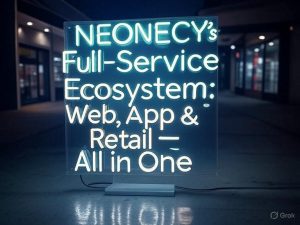Why Web3 and Why Now?
The digital landscape is rapidly evolving, and Web3 is at the center of this transformation. From decentralized finance (DeFi) to NFTs, DAOs, and beyond, Web3 offers a new way of interacting with technology and data. If you’re looking to launch your first Web3 project, you’re tapping into a future-forward movement that is reshaping the internet as we know it.
But launching in this space can be overwhelming—smart contracts, blockchain networks, gas fees, and a rapidly changing ecosystem. This guide is here to help you launch your first Web3 project with confidence, whether you’re a developer, entrepreneur, or digital innovator.
1. Understanding Web3 Basics
Before you launch your first Web3 project, you need to understand what Web3 actually is. Unlike Web2, which relies on centralized servers and corporate control, Web3 leverages blockchain technology for transparency, decentralization, and user control.
Key Concepts:
-
Blockchain: A decentralized ledger of transactions.
-
Smart Contracts: Code that automatically executes when certain conditions are met.
-
Tokens: Digital assets (e.g., ETH, MATIC, USDC).
-
Wallets: Tools to interact with Web3 apps (e.g., MetaMask).
2. Defining Your Web3 Project’s Purpose
Every successful launch begins with a clear vision. Define what you want your Web3 project to do. Is it a DApp (decentralized app)? An NFT marketplace? A DAO? Knowing your project’s purpose will keep your development process focused.
Questions to Ask:
-
What problem am I solving?
-
Who is my target audience?
-
Why does this need to be on Web3?
Write a project brief to keep stakeholders and contributors aligned.
3. Choosing the Right Blockchain
You can’t launch your first Web3 project without picking a suitable blockchain network. Each blockchain has trade-offs in speed, cost, and decentralization.
Popular Choices:
-
Ethereum: Most used but high gas fees.
-
Polygon: Low fees, EVM-compatible.
-
Solana: Very fast but more centralized.
-
BNB Chain: Cost-effective with large ecosystem.
If this is your first launch, consider testnets like Goerli or Mumbai for development and testing.
4. Building the Core Product
Now it’s time to bring your idea to life. If you’re not a developer, you can collaborate with a Web3 dev or agency.
Tech Stack Components:
-
Frontend: React.js or Next.js
-
Smart Contracts: Solidity (Ethereum, Polygon), Rust (Solana)
-
Backend (Optional): Node.js, Firebase, IPFS for decentralized storage
-
Wallet Integration: MetaMask, WalletConnect
-
Frameworks: Hardhat, Truffle, Foundry
Make sure your UI/UX is simple, intuitive, and explains Web3 elements for non-technical users.
5. Testing Smart Contracts and DApps
Mistakes in Web3 can be costly, so thorough testing is critical. Use testnets and simulate all possible scenarios.
Testing Tools:
-
Hardhat/Truffle: For local blockchain simulation.
-
Remix IDE: Great for beginners.
-
Ganache: Local Ethereum testing.
-
Ethers.js/Web3.js: Libraries for contract interactions.
Write automated test cases to catch bugs early and often.
6. Deploying to Mainnet
Once testing is complete, you’re ready to launch your first Web3 project on the mainnet.
Steps:
-
Double-check smart contracts for vulnerabilities.
-
Use verified wallets to deploy (with enough native tokens).
-
Monitor contract behavior using tools like Etherscan or Polygonscan.
-
Verify contracts publicly for trust and transparency.
7. Launching Your Token (Optional)
If your project includes a native token (like an ERC-20 or BEP-20 token), ensure it’s utility-driven and compliant.
Tips:
-
Avoid over-minting or unnecessary supply inflation.
-
Use OpenZeppelin contracts for security.
-
Conduct audits before launch.
8. Security Best Practices
Security is essential when you launch your first Web3 project. Hacks can drain millions in seconds.
Checklist:
-
Use multisig wallets for admin privileges.
-
Limit contract permissions.
-
Have independent security audits.
-
Avoid storing private keys in the codebase.
9. Marketing and Community Building
You’ve built it—now it’s time to show the world. A strong community can make or break a Web3 launch.
Marketing Channels:
-
Twitter/X
-
Discord or Telegram community
-
Medium blog posts
-
AMA Sessions
-
Airdrops or token incentives
Highlight your USP and roadmap clearly in your whitepaper and on your website.
10. Post-Launch Monitoring and Iteration
A successful launch is just the beginning. Use analytics and feedback to refine and improve.
Tools for Monitoring:
-
Dune Analytics
-
The Graph
-
Google Analytics (for frontend)
-
Sentinel (security monitoring)
Keep your community engaged through updates, features, and governance votes.
11. Legal and Regulatory Compliance
Web3 is still evolving, but ignoring legalities can cost you big time.
Important Considerations:
-
Know your jurisdiction.
-
Use Terms of Service and Privacy Policies.
-
Understand token classification (security vs utility).
-
Consult a blockchain lawyer.
12. Common Mistakes to Avoid
Avoid these pitfalls when you launch your first Web3 project:
-
Over-promising in marketing
-
Skipping security audits
-
Poor documentation
-
Ignoring gas optimization
-
Launching before testing thoroughly
Conclusion: Web3 is Waiting for You
To launch your first Web3 project with confidence, you need a combination of planning, technical knowledge, and community support. Start small, stay focused, and always iterate.
Remember, every major Web3 project today started as someone’s first. With the right tools and mindset, you can build the next big thing.
Call to Action:
Are you ready to launch your first Web3 project? Share your ideas or questions in the comments. Or contact us today if you need a development partner!





